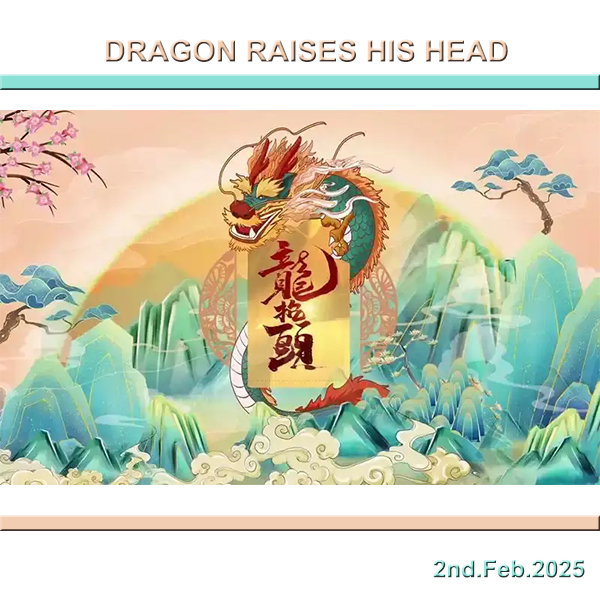The Dragon Head Raising Festival: A Celebration of Spring and Tradition
Origins of Longtaitou
The Dragon Head Raising Festival, known as Longtaitou (龙抬头), falls on the second day of the second lunar month, marking the awakening of the dragon—a symbol of power, rainfall, and renewal in Chinese culture. Rooted in ancient agrarian society, the festival aligns with the solar term Jingzhe (惊蛰), when spring thunderstorms begin and hibernating creatures stir. According to astronomy, the "dragon" refers to the constellation resembling a dragon, whose "head" (the stars Alpha and Beta Hydrae) rises above the horizon in early spring, signaling farmers to prepare for planting. The day embodies hopes for a prosperous year, with rituals like haircuts (to "lift" luck) and dragon-themed dances to invite blessings.
Mythology: The Dragon’s Gift
One legend tells of a dragon punished by the Jade Emperor for defying orders to withhold rain during a drought. Trapped under a mountain, the dragon was freed only when a compassionate village chief struck the earth with a plow on the second day of the second month, releasing rainwater and reviving the land. Another tale links the festival to Emperor Guangwu of the Han Dynasty, who credited his victory to a dragon’s guidance on this day. These stories reflect the dragon’s role as a bridge between heaven and earth, balancing nature’s forces.
Wenzhou’s Cabbage Rice Tradition
In Wenzhou, Zhejiang Province, eating jiecai fan (芥菜饭, mustard green rice) on this day is a beloved custom. Folklore traces it to the Song Dynasty, when a scholar-turned-official discovered locals suffering from spring lethargy and skin ailments. He prescribed a dish of stir-fried rice with mustard greens—a vitamin-rich vegetable believed to detoxify the body. Another version claims a poor farmer once shared his humble cabbage rice with a deity disguised as a beggar, who then blessed the region with fertile fields. Today, the savory dish symbolizes health, renewal, and gratitude for nature’s bounty.
A Global Invitation
China’s festivals are living tapestries of history and community. As we celebrate Longtaitou—whether by enjoying cabbage rice in Wenzhou, flying kites shaped like dragons, or simply appreciating spring’s first bloom—we honor traditions that connect us to the rhythms of nature and shared humanity. To friends worldwide: You are warmly invited to experience these cultural treasures firsthand. Let us gather in the years to come, not just as observers but as participants, weaving new stories into China’s ancient celebrations. Together, may we cherish the past and cultivate a future where every culture’s light shines bright.
